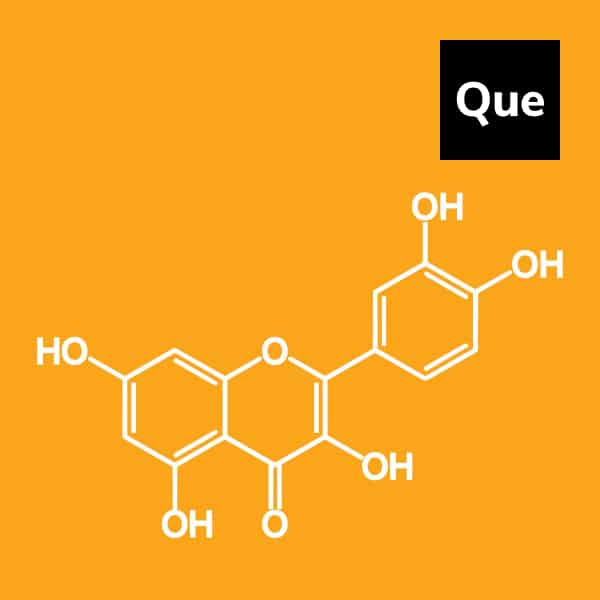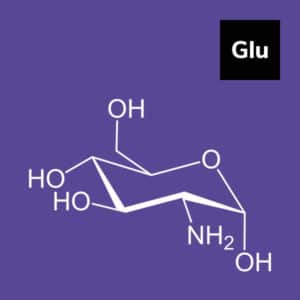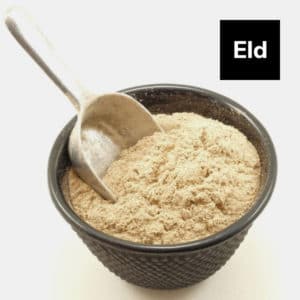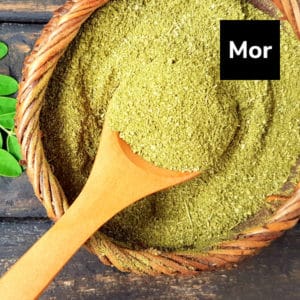Overview
Quercetin is a member of the water-soluble plant pigments called flavonoids, which offer antioxidant protection against disease and inflammation in all cell environments. Quercetin is the most abundant flavonoid in the average diet, and it is a natural pigment found in plants and foods including onions, green and black tea, coffee, apples, berries, citrus, broccoli, some leafy green vegetables, beans, and wine.
Key Benefits
- Provides antioxidant protection
- Offers allergy relief by inhibiting the release of histamine
- Supports cardiovascular health
- Supports healthy blood pressure
- Inhibits intestinal glucose absorption
- Supports healthy glucose levels
- Protects against insulin resistance
- Supports healthy blood lipid levels
- Reduces blood platelet aggregation
- Boosts immunity
- Provides neuroprotective effects
- May improve exercise performance
History of Usage
The name quercetin has been used since 1857 and is taken from quercetum, after the oak genus Quercus. Initially, quercetin was considered to be a vitamin and given the name “vitamin P.” It was identified after the Hungarian biochemist Albert Szent-Gyorgyi discovered bioflavonoids in 1937, for which he won a Nobel Prize. Quercetin was initially overlooked due to the fact that it did not appear to be a necessary micronutrient. As epidemiological studies demonstrated the beneficial effects of flavonoids on cardiovascular health in the 1990s, more researchers began doing in-depth investigations on quercetin.
Quercetin is one of the most abundant flavonoids in the diet, with an average daily consumption of 25-50 mg. Supplements containing quercetin are available in the form of tablets, capsules, powders, and tinctures.
Biochemistry
Quercetin is not absorbed well on its own. It is more easily absorbed when combined with other compounds, such as vitamin C or digestive enzymes like bromelain. According to several studies, quercetin works synergistically with other flavonoid supplements such as resveratrol, genistein, and catechins. Quercetin exhibits antibacterial effects against almost all strains of bacteria, particularly those affecting gastrointestinal, respiratory, urinary, and dermal systems. Quercetin exerts anti-allergy effects by inhibiting the release of histamine from mast cells, acting as a natural antihistamine.
Quercetin has been demonstrated to reduce stomach acid output and lipid peroxidation in gastric cells, acting as a gastroprotective agent. It also inhibits Helicobacter pylori infection. Epidemiological surveys show that diets with more vegetables and fruits have protective effects against cancer. Quercetin has potential anticancer properties that include antiproliferative, growth factor suppression, and antioxidant protection.
Quercetin ,along with ascorbic acid, reduces the incidence of oxidative damage to human lymphocytes and neurovascular structures in the skin and inhibits damage to neurons. It has been shown to protect brain cells against oxidative stress.
Recent Trends
Quercetin is now included in energy and nutraceutical drinks because of its vast benefits, including energy boost, antioxidant properties, anti-inflammatory, and enhancement of lung functioning. It is also gaining in popularity because of its pharmacological properties, including anti-inflammatory, antiviral, antimicrobial, cardiovascular, anticancer, antiobesity, neuroprotective, and a reproductive system protectant. The US market is expected to grow by $110 million by 2024 at a CAGR of 6.53%.
Precautions
- Pregnant and nursing mothers should consult their health care provider before taking quercetin.
- Quercetin appears safe without side effects.
- If more than 1,000 mg is ingested, it may cause headache, stomach ache, or physical tingling sensations.
References
- Brüll V, Burak C, Stoffel-Wagner B, et al. Effects of a quercetin-rich onion skin extract on 24 h ambulatory blood pressure and endothelial function in overweight-to-obese patients with (pre-)hypertension: a randomised double-blinded placebo-controlled cross-over trial. Br J Nutr. 2015;114(8):1263-1277. doi:10.1017/S000711451500295
- Eid HM, Haddad PS. The Antidiabetic Potential of Quercetin: Underlying Mechanisms. Curr Med Chem. 2017;24(4):355-364. doi: 10.2174/0929867323666160909153707. PMID: 27633685.
- Yang DK, Kang HS. Anti-Diabetic Effect of Cotreatment with Quercetin and Resveratrol in Streptozotocin-Induced Diabetic Rats. Biomol Ther (Seoul). 2018;26(2):130-138. doi:10.4062/biomolther.2017.254
- Arias N, Macarulla MT, Aguirre L, Martínez-Castaño MG, Portillo MP. Quercetin can reduce insulin resistance without decreasing adipose tissue and skeletal muscle fat accumulation. Genes Nutr. 2014;9(1):361. doi:10.1007/s12263-013-0361-7
- Zhao L, Cen F, Tian F, et al. Combination treatment with quercetin and resveratrol attenuates high fat diet-induced obesity and associated inflammation in rats via the AMPKα1/SIRT1 signaling pathway. Exp Ther Med. 2017;14(6):5942-5948. doi:10.3892/etm.2017.5331
- Mlcek J, Jurikova T, Skrovankova S, Sochor J. Quercetin and Its Anti-Allergic Immune Response. Molecules. 2016 May 12;21(5):623. doi: 10.3390/molecules21050623. PMID: 27187333; PMCID: PMC6273625.
- Lee M, McGeer EG, McGeer PL. Quercetin, not caffeine, is a major neuroprotective component in coffee. Neurobiol Aging. 2016 Oct;46:113-23. doi: 10.1016/j.neurobiolaging.2016.06.015. Epub 2016 Jul 5. PMID: 27479153.
- Serban MC, Sahebkar A, Zanchetti A, Mikhailidis DP, Howard G, Antal D, Andrica F, Ahmed A, Aronow WS, Muntner P, Lip GY, Graham I, Wong N, Rysz J, Banach M; Lipid and Blood Pressure Meta‐analysis Collaboration (LBPMC) Group. Effects of Quercetin on Blood Pressure: A Systematic Review and Meta-Analysis of Randomized Controlled Trials. J Am Heart Assoc. 2016 Jul 12;5(7):e002713. doi: 10.1161/JAHA.115.002713. PMID: 27405810; PMCID: PMC5015358.
- Kressler J, Millard-Stafford M, Warren GL. Quercetin and endurance exercise capacity: a systematic review and meta-analysis. Med Sci Sports Exerc. 2011 Dec;43(12):2396-404. doi: 10.1249/MSS.0b013e31822495a7. Erratum in: Med Sci Sports Exerc. 2012 Mar;44(3):558-9. PMID: 21606866.
- National Center for Biotechnology Information (2021). PubChem Compound Summary for CID 5280343, Quercetin. Retrieved October 21, 2021 from https://pubchem.ncbi.nlm.nih.gov/compound/Quercetin.
- Kaşıkcı M. B, Bağdatlıoğlu N. Bioavailability of Quercetin. Curr Res Nutr Food Sci 2016;4(Special Issue Confernce October 2016). doi : http://dx.doi.org/10.12944/CRNFSJ.4.Special-Issue-October.20
- Pignatelli P, Pulcinelli FM, Celestini A, Lenti L, Ghiselli A, Gazzaniga PP, Violi F. The flavonoids quercetin and catechin synergistically inhibit platelet function by antagonizing the intracellular production of hydrogen peroxide. Am J Clin Nutr. 2000 Nov;72(5):1150-5. doi: 10.1093/ajcn/72.5.1150. Erratum in: Am J Clin Nutr 2001 Feb;73(2):360. PMID: 11063442.
- Park HJ, Yang JY, Ambati S, Della-Fera MA, Hausman DB, Rayalam S, Baile CA. Combined effects of genistein, quercetin, and resveratrol in human and 3T3-L1 adipocytes. J Med Food. 2008 Dec;11(4):773-83. doi: 10.1089/jmf.2008.0077. PMID: 19053873.
- Scheepens A, Tan K, Paxton JW. Improving the oral bioavailability of beneficial polyphenols through designed synergies. Genes Nutr. 2010 Mar;5(1):75-87. doi: 10.1007/s12263-009-0148-z. Epub 2009 Oct 20. PMID: 19841960; PMCID: PMC2820202.
- Andres S, Pevny S, Ziegenhagen R, Bakhiya N, Schäfer B, Hirsch-Ernst KI, Lampen A. Safety Aspects of the Use of Quercetin as a Dietary Supplement. Mol Nutr Food Res. 2018 Jan;62(1). doi: 10.1002/mnfr.201700447. Epub 2017 Dec 19. PMID: 29127724.
- Edwards RL, Lyon T, Litwin SE, Rabovsky A, Symons JD, Jalili T. Quercetin reduces blood pressure in hypertensive subjects. J Nutr. 2007;137:2405–11.
- Coles LS. Quercetin: A Review of Clinical Applications. Available from: http://www.chiro.org/nutrition/ABSTRACTS/Quercetin_A_Review.shtml
- Lakhanpal P, Rai DK. Quercetin: A versatile flavonoid. Int J Med Update. 2007;2:22–37.
- Lamson DW, Brignall MS. Antioxidants and cancer, part 3: quercetin. Altern Med Rev. 2000 Jun;5(3):196-208. PMID: 10869101.
- Perez-Vizcaino F, Duarte J. Flavonols and cardiovascular disease. Mol Aspects Med. 2010;31(6):478-494.20837053




